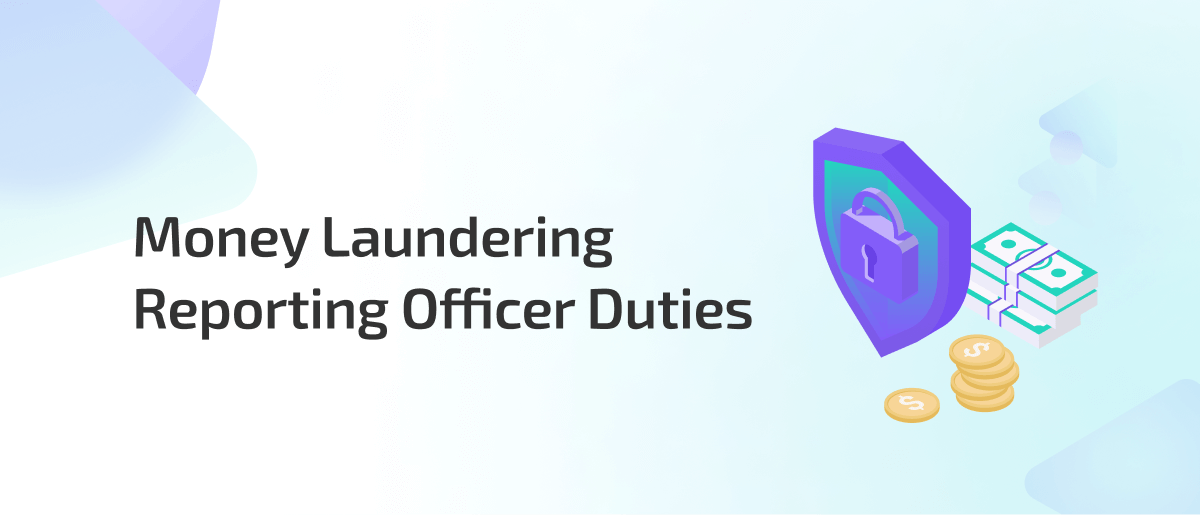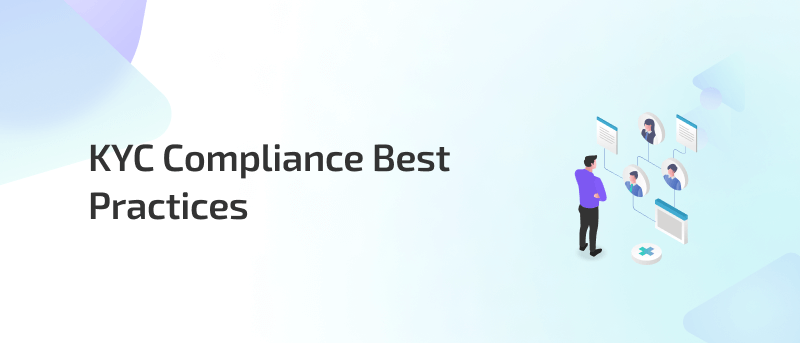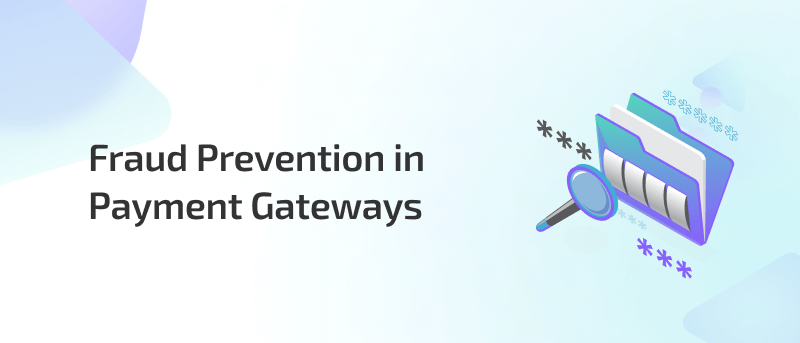.webp)
Published on
July 23, 2025
What is a Money Laundering Reporting Officer (MLRO)? Duties and Compliance Explained
In this story

Accelerate AML Compliance: Meet Regulatory Demands with 80% Less Setup Time
.svg)
.svg)
The MLRO position, short for Money Laundering Reporting Officer, is the central figure responsible for managing an organization’s anti-money laundering (AML) framework. While the exact responsibilities of an MLRO vary depending on the country or industry, their primary task is to detect, evaluate, and report suspicious transactions that could indicate money laundering or other financial crimes.
The Money Laundering Reporting Officer is a role that first became mandatory in many jurisdictions following the FATF Recommendations, EU AML Directives, the UK Proceeds of Crime Act (POCA), and the U.S. Bank Secrecy Act (BSA).
What is a Money Laundering Reporting Officer (MLRO)?
In many organizations, especially financial institutions and designated non-financial businesses (DNFBPs), the MLRO money laundering is required to act independently, report directly to senior management, and liaise with regulators when submitting a suspicious activity report (SAR) or MLRO report.
The MLRO money laundering compliance ensures that internal policies are actually effective in detecting and preventing financial crime in practice. Also, the MLRO meaning is often misunderstood because many view it as a purely administrative role, overlooking its critical legal accountability and strategic responsibility for preventing financial crime within an institution.
In fact, this role must provide real-time guidance, oversee transaction monitoring systems, and ensure the organization's AML efforts align with legal obligations.
Key Takeaway:
The MLRO (Money Laundering Reporting Officer) is the designated person responsible for overseeing anti-money laundering compliance, reporting suspicious activities, and ensuring the company meets legal obligations.
How the MLRO Role Came to Be
The role of the Money Laundering Reporting Officer (MLRO) stems from global efforts to fight financial crime, with international bodies like the Financial Action Task Force (FATF) setting standards that many countries have incorporated into law.
For instance, in the UK, the Proceeds of Crime Act (POCA) and Money Laundering Regulations (MLRs) require regulated firms to appoint an MLRO money laundering to handle internal reports of suspicious activity and decide if they should be reported to authorities, while in the US, the Bank Secrecy Act (BSA) establishes similar responsibilities for compliance officers acting as MLROs.
Who Must Appoint an MLRO?
Not every business needs to have an MLRO money laundering. Generally, the requirement applies to:
- Banks and other financial institutions
- Insurance companies
- Investment firms and brokers
- Money service businesses (MSBs)
- Casinos and gaming operators
- Real estate agents, lawyers, and accountants involved in certain transactions (DNFBPs or Designated Non-Financial Businesses and Professions)
- Cryptocurrency exchanges and wallet providers, increasingly under regulatory scrutiny worldwide
These businesses handle large sums of money or high-risk transactions, making them vulnerable to money laundering risks.
It is important to note that while the MLRO responsibilities share common themes globally, local regulations can vary. For instance, in the GCC region, countries like the UAE and Saudi Arabia have issued AML laws reflecting FATF standards but tailored for their markets. This means that the exact MLRO job description and reporting obligations can differ slightly, but the core function, which is preventing financial crime, remains constant.
Comply quickly with local/global regulations with 80% less setup time
.svg)
.svg)
What Are the Primary MLRO Responsibilities?
An MLRO’s responsibilities cover a broad range of tasks aimed at protecting an organization from money laundering risks. The key duties usually are:
- Receiving and reviewing internal suspicious activity reports (SARs) from employees to determine if further action is needed.
- Filing official suspicious activity reports with relevant authorities when required.
- Ensuring the AML policies and controls meet legal and industry standards, including customer due diligence and transaction monitoring.
- Coordinating AML training to keep staff aware of their compliance duties.
- Acting as the main contact with regulators and law enforcement during audits or investigations.
- Working with compliance teams to maintain and optimize AML technology and systems for detecting suspicious activity.
MLRO Responsibilities Vs. Other Compliance Roles
While some organizations may have multiple compliance roles, such as a Money Laundering Compliance Officer (MLCO) or a BSA Officer, the MLRO money laundering holds ultimate responsibility for AML governance and reporting. This means the MLRO has the authority to make final decisions on whether to escalate reports and ensure the organization's overall AML compliance.
Qualifications, Skills, and Career Path for Aspiring MLROs
Becoming an effective Money Laundering Reporting Officer (MLRO) requires the right qualifications, skills, and a clear career path to handle financial crime risks successfully.
What Does It Take to Become an MLRO?
Becoming an effective Money Laundering Reporting Officer requires a combination of formal education, professional experience, and key personal attributes.
1. Educational Background
Typically, MLRO money laundering candidates hold a bachelor’s degree in fields like finance, law, criminology, or business administration. Some may also pursue postgraduate qualifications specializing in AML, compliance, or forensic accounting.
2. Professional Experience
Most MLRO roles require several years of experience in compliance, risk management, or investigations within financial institutions or regulated businesses. Hands-on familiarity with AML laws, transaction monitoring systems, and regulatory reporting is essential.
3. Certifications and Training
Certifications significantly strengthen an MLRO’s credentials. Some widely recognized AML certifications include:
- Certified Anti-Money Laundering Specialist (CAMS) by ACAMS
- ICA International Diploma in Anti Money Laundering
- FCA Certificate in AML (UK)
There are also other region-specific AML qualifications.
4. Personal Attributes
An MLRO money laundering must possess strong analytical skills, attention to detail, integrity, and the ability to make sound judgments under pressure. Effective communication skills are also critical, as MLROs liaise with staff, management, and regulators.
How to Become an MLRO: A Step-by-Step Summary
- Obtain relevant education in finance, law, or compliance
- Gain experience in AML or fraud investigation roles
- Complete industry-recognized AML certifications
- Develop skills in transaction monitoring and regulatory reporting
- Build relationships with compliance peers and regulators
- Seek formal appointment as MLRO by an organization
Key Takeaway:
To become an MLRO money laundering, one needs relevant education, strong AML experience, recognized certifications like CAMS, and key personal skills such as analytical thinking and integrity. The career path combines knowledge, practical AML expertise, and professional development.
Common Challenges Faced by MLROs and Strategies to Address Them
The position of an MLRO is demanding and complex, and professionals in this role often face multiple challenges, such as:
- Balancing compliance with business needs: MLROs must enforce strict AML controls without overly restricting legitimate business activities. This requires careful risk assessment and stakeholder management.
- Managing high volumes of alerts: With transaction monitoring systems generating large numbers of alerts, MLROs must prioritize and investigate efficiently to avoid backlog and missed risks.
- Keeping up with evolving regulations: AML laws and regulations frequently change, especially with the rise of new technologies like cryptocurrencies. Staying current is essential. Read more: Cryptocurrency Transaction Monitoring: Regulations, and Best Practices
- Ensuring staff compliance and awareness: The MLRO is responsible for ongoing AML training and fostering a compliance culture, which can be difficult in large or diverse organizations.
- Maintaining independence and authority: MLROs need clear authority and support from senior management to take necessary actions, especially when reporting suspicious activities.
- Technology challenges: Choosing, implementing, and optimizing AML compliance software is critical but complex, and poorly configured systems can lead to false positives or missed suspicious activities.
Why AML Compliance Software Matters for MLROs
Effective AML software is a vital tool for MLROs, helping automate transaction monitoring, identify suspicious patterns, and manage case investigations. It can dramatically reduce manual workloads and improve detection accuracy.
However, MLROs must be involved in selecting and customizing software solutions to ensure they meet the organization’s specific risks and regulatory requirements.
How MLRO Differs from MLCO and BSA Officer
While the terms MLRO (Money Laundering Reporting Officer), MLCO (Money Laundering Compliance Officer), and BSA Officer are sometimes used interchangeably, they refer to distinct roles with specific responsibilities depending on jurisdiction.
The table below outlines the key differences and similarities:
AML Compliance Solution Tailored for MLROs in the GCC
The FOCAL AML compliance solution is a powerful tool that significantly enhances the effectiveness of Money Laundering Reporting Officers (MLROs) by automating and streamlining key aspects of anti-money laundering efforts.
With FOCAL’s advanced transaction monitoring tool, MLROs can efficiently detect suspicious activity across vast volumes of data using AI-driven analytics, reducing manual workload and increasing detection accuracy. Its robust case management tool simplifies the investigation and reporting process by centralizing alerts, customer due diligence information, and regulatory documentation in one accessible system.
This integrated approach enables MLROs to quickly prioritize high-risk cases, generate comprehensive MLRO reports compliant with regulatory standards, and maintain audit-ready records. By leveraging FOCAL’s intelligent compliance tools, money laundering officers can focus more on strategic decision-making and regulatory engagement, ensuring their institutions remain compliant while effectively managing financial crime risks.
FAQs:
Q1. What Is MLRO?
An MLRO (Money Laundering Reporting Officer) is the person responsible for identifying and reporting suspicious financial activity in a business to meet anti-money laundering (AML) obligations.
Q2. What Does MLRO Stand For?
MLRO stands for Money Laundering Reporting Officer, a role required in many regulated industries to ensure compliance with AML laws.
Q3. Why Is the MLRO Role Important for Financial Institutions?
The MLRO money laundering protects the institution from money laundering risks by ensuring AML compliance, detecting suspicious activity, and reporting it to authorities.
Q4. What Is the Difference Between AML and MLRO?
AML refers to anti-money laundering rules and procedures. The MLRO is the officer responsible for managing and enforcing those rules within a company.
Q5. Who Is the Money Laundering Officer?
The MLRO meaning refers to the person in charge of reviewing suspicious activity and reporting it to regulators to meet AML requirements.
Streamline Compliance: Achieve 80% Faster Setup for Fraud Prevention
.svg)
.svg)

How Aseel reduced onboarding time by more than 87% using FOCAL
Learn how FOCAL empowered Aseel to achieve new milestones.
.svg)
.svg)
Mastering Fraud Prevention: A Comprehensive Guide for KSA and MENA Businesses
51% of organizations fell victim to fraud in the last two years, don't be caught off guard, act proactively.
.svg)
.svg)
Featured blog posts
.svg)
AI-Driven Precision in Fraud Risk and AML Compliance
.svg)
.svg)

.svg)
.png)






.webp)




.svg)

_FastestImplementation_Small-Business_GoLiveTime.png)

_HighPerformer_Small-Business_HighPerformer.png)
_Leader_Leader.png)



%20(1).webp)